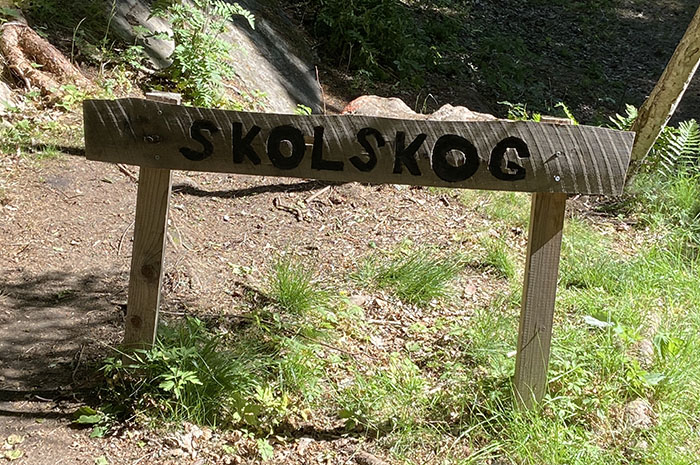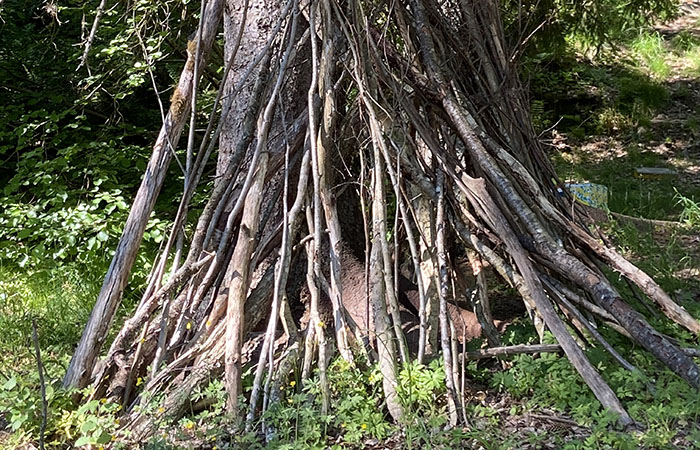When outdoors become the new indoors
At Attarpsskolan in Bankeryd, just outside Jönköping, students in pre-school class year 3 have outdoor lessons together with Linus Ögren, who is a after-school and outdoor educator. Students who are studying to become primary teachers with a focus on after-school care at the School of Education and Communication (HLK) at Jönköping University (JU), will participate by planning and implementing outdoor education during the spring.
The collaboration between Jönköping Municipality and HLK takes place in the form of student teachers taking a course where they get to organize and conduct outdoor educational lessons in one of the school forests near Attarpsskolan. Here, the student teachers get the chance to combine theory with hands-on practical activities.

New environments and contexts
Maria Hammarsten is a university lecturer at HLK and also course manager for the course “Outdoor pedagogy for primary school teachers after school care”. She describes the purpose of the course as finding an accessible, inclusive and extended learning environment for all primary and after-school students.
“For some students, it is absolutely necessary to leave the classroom environment for different reasons, to discover that it is possible to learn in other ways. If we are to have a inclusive and inspiring learning environment, teachers must be given the opportunity to approach education in different ways,” says Maria.

Linus Ögren, after-school and outdoor educator.
Linus Ögren sees outdoor teaching, in taking advantage of the surrounding environment outside of the classroom,-as being beneficial both from a physical and mental perspective.
“By allowing students to spend time outdoors and take part in physical activities, I believe that they are positively affected in various ways; better health, better mental well-being and an increased motivation to study,” says Linus. “By learning in the natural environment, students can open up to new perspectives and ideas that can enhance their creativity,” he continues.
Hand in hand with sustainability
The collaboration between Attarpsskolan and HLK's course chimes well with Jönköping municipality's program for sustainability, which some parts describe how children and students should be encouraged to be active, to foster an understanding of nature and be given good opportunities to spend time outdoors.
“Here JU can contribute with science and a deeper understanding of how structured outdoor pedagogy actually contributes to the municipality's sustainability goals and work, says Maria Hammarsten. “I am convinced that this sustainable type of teaching is based on us applying different types of educational materials and environments - it is about having a large "toolbox" and encouraging variety and flexibility,” she continues.
Increased commitment
Linus sees the variety in outdoor pedagogy, the fact that the teaching is not conducted indoors, but that the conditions can also change depending on the season and location. It also increases the commitment of the students to develop their social skills, communicate and solve problems through collaboration together with their classmates.

The pupils at Attarpsskolan have built a tree hut in the woods
“In the classroom, students usually sit at their desks while listening to the teacher or working on assignments. Outdoor lessons can mean that students get more physical activity and are more active in their learning by, for example, investigating nature, exploring the area or performing physical activities,” says Linus. “Because students can feel, hear, see, and sometimes taste nature, this gives them a more diverse learning experience and can help strengthen memories of subject topics.”
For more information about outdoor pedagogy contact Maria Hammarsten.
